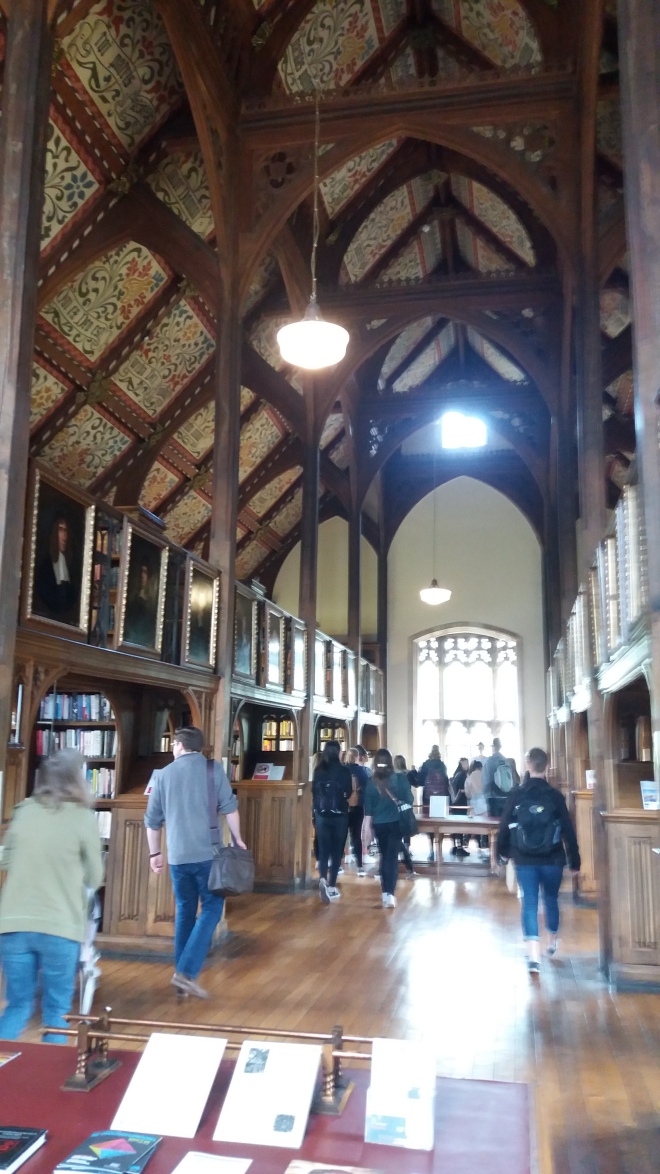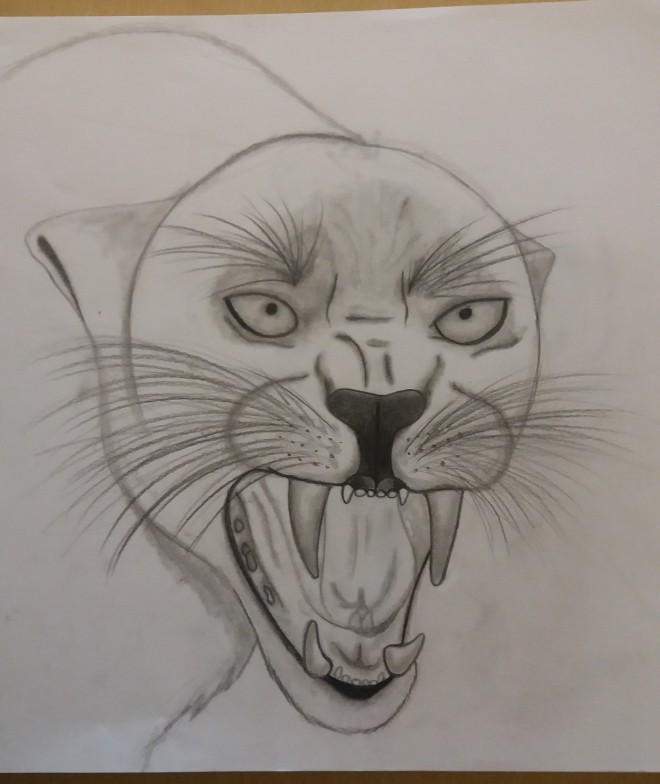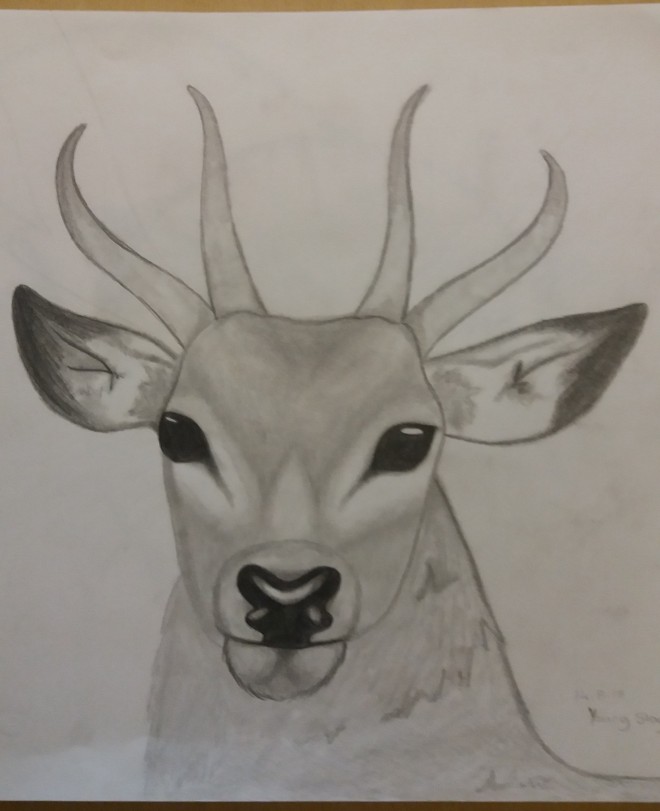Katie in Year 7 has written an insightful and introspective poem full of depth and profoundness. Read the fantastic piece here!
Mansfield College, Oxford – A York Student’s Perspective
We received an article from Beau in Year 10 describing their recent trip to Oxford University with the York ISSP. The article, as seen below, describes the events of the day and how they have impacted the views of this young student about the University, the city of Oxford and further education in general. Thank you for the submission Beau and we’re glad you found the trip insightful and interesting.
York ISSP Trip To Oxford
We arrived at Mansfield College, Oxford, on a sunny June morning. We went into one of the lecture halls at the college, where some common myths were busted about the university. I was surprised as I thought you needed to come from a wealthy middle/upper class family to attend Oxford University. We were then told about the many different societies you can join in Oxford. For example, there are quidditch, tea-drinking and movie societies to name but a few. It soon became clear that there is a society for everyone! We were given a very insightful tour around Mansfield College, learning about university life, student accommodation, libraries and common rooms. Seeing these in person really helped to provide perspective about what university life is like in Oxford. Lunch was served in a magnificent chapel that is also used at the hall. It was like being transported back into a bygone era with ornate architecture in these historic buildings. The afternoon was spent in the city centre, visiting museums and seeing the range of historic buildings. It was clear to see how much is on offer to students at Oxford, from rowing competitions, punting with friends and studying in one of the many impressive libraries. Overall, I really enjoyed my visit to Oxford. It was an enlightening experience and I learnt a lot about the university. It has given me a clearer idea about my next steps in education. Meeting students from York at the University made me realise that Oxford University is for ordinary people like me and has inspired me to aim higher in my goals for the future.



ISSP Easter Masterclasses
As the summer holidays loom on the horizon, we are aware that some of our readers will be preparing to take part in ISSP Summer School. Whilst we are a separate entity to York ISSP, we are incredibly lucky to be supported by them and they gave us the wonderful opportunity to see some of the fantastic work at the Easter masterclasses this year and even steal a few students for some interviews!
If you’re attending the Summer school, we hope this might soothe some nerves about coming and get you excited about what you have in store, and, if you’re not, then we hope this will give you something to think about – maybe an ISSP masterclass will help you discover studying something you really love!
An Observation Of Our Natural World
Rebecca has sent us in a series of sketches that she has produced and they are truly fantastic! Each depicts an animal, both fictional and real, that provides more and more detail the closer you look at them. They look as though they have leapt straight out of her imagination and onto the page. Thank you for sharing this with us Rebecca, keep up the amazing work that you have created here.

A Dragon perched atop their rocky domain.

Golden Eagle – Majestic and regal with a piercing gaze.

A Jaguar baring its teeth towards an intruder within its territory.

A Young Stag – Nobility and grace incarnate with large eyes observing all.
UKMT Team Maths Challenge
Alexandra has written a fantastic account of her time at the UKMT Team Challenge final. Well done!
88 school teams from around the UK met at the Royal Horticultural Society, Lindley Hall for the finals of the UKMT Team Challenge National Final. We were a team of 4 young mathematicians representing Huntington School (and York!), after we won the Regional Final last term. Sam and I are Year 9s and this was our final year in the UKMT Team Competition. Oscar is a Year 8 and he specialises in algebra. And a Year 7, also called Sam, has helped us all the way through our team’s journey through his amazing arithmetic and problem solving expertise.
The Royal Horticultural Society has hosted the UKMT competition for the past decade. It has a rich history of maths competitions, having held one of the very first competitions/conventions of modern algebra in the mid 1890s.
There were five rounds in the competition, each testing a different discipline and part of teamwork. The Group Circus tested our ability to work efficiently and effectively with the rest of the team. During the Shuttle, teams had to trust and depend on the other pair to pass over the correct answers. In the Cross-number, the teams of four were split again into two pairs, and communication was not allowed. This meant to work effectively we had to keep trying to get the answers the other pair needed. Finally, there was the relay round, where the we had succeeded in the Regional finals to get enough points to take us to Nationals.
The problems were very tricky but we found that y=mx+c (York Mathematical Excellence Club) had prepared us for the standard of problem solving needed for this competition (younger Sam looks forward to joining y=mx+c next year!).
Thanks to some great training from ISSP and the Huntington maths department (including Miss Brewin and Mr Ainscough, as well as Miss Mansfield whose paper drawer we may or may not have raided), we won first place in the Poster Competition.
Sam and Oscar are already looking forward to defending their trophy in next year’s competition. Meanwhile Alex and older Sam will have to wait for the Senior Team Competition in year 12!
Why Politics Matters
Theo, who recently attended the ISSP Y7/8 lecture, has written a fantastic summary of his experience. This is a great example of how enriching ISSP events are for all the pupils involved.
On Thursday the 6th of June 2019, through the sponsorship of the ISSP, a group of over 80 secondary school students gathered at the University of York to listen to Rachael Maskell give a speech about why politics matters.
Rachael started off with an updated quote from Edmund Burke: “The only thing necessary for the triumph of evil is for good men (or women) to do nothing”. She then talked about how elections are not the whole of politics and so that we should not be discouraged by them.
Rachael talked about how politics is power and how politics happens all the time. Rachael used family as an example of where you will have a power dynamic; and how you and the other members of your family will negotiate for the things they want. Moving to the wider world and taking Greta Thunberg as her example, she showed how even young people can influence others. As Rachael pointed out, Greta was able to get people’s attention by the simple act of exchanging the school classroom for the pavement outside the Swedish parliament. Rachael pointed out how you can use social media to build your movement and how we have nothing holding us back from changing the world.
Rachael looked at other ways others make a change such as talking to local people, starting petitions, holding public meetings and holding politicians to account. How you should stand up with what you believe in and how you need to be there as, if you were absent yourself, someone else will take your place. Inspiring us to join the world of politics.
Rachael then asked about what the students in the room felt was important to them. In an enthusiastic response, some of the things brought up were climate change, free school meals, student mental health, homelessness and the refugee crisis etc. For most of the students, climate change was the issue of the moment. Showing how young people really do care about the planet and what is happening to it and more importantly will speak up given the chance.
We were all very lucky at ISSP to have this wonderful opportunity to hear an inspiring talk from Rachael Maskell!
Digital Drugs
A fictional piece about the woes of social media, taking inspiration from a song of the same name. We really loved this work from Matilda in Year 10!
Save Askham Bog
We received this piece from Ellie in Year 7. The conservation of our green and natural spaces is of paramount importance to both the environment and the wildlife that inhabits these areas. Ellie has written a short persuasive piece about the importance of preserving Askham Bog.
This short non-fiction piece is about a wonderful woodland in the South-East of York and how you can make a difference and help save it.
Askham Bog is a treasured and fundamental place in the South – East of York, it is an ancient marsh originally used for peat extraction, however, this fascinating and beautiful nature reserve, that even Sir David Attenborough has said is ‘’irreplaceable’, has come under serious threat. A planning application has been submitted that could mean Askham Bog’s wildlife could be destroyed.
The area is a special place to me and my family because we have had so many wonderful afternoons spotting roe deer, robins, blue tits and many other incredible animal species there. We have also loved looking at royal ferns and breath-taking irises. Askham Bog is also wonderful because it is such an eye-catching woodland so close to the busy town.
The bog and surrounding woods are also a vital part of making sure that air pollution does not rise even more. In York, Fishergate’s air pollution is already unhealthy and destroying even more of York’s green spaces will increase it further to the point of becoming seriously dangerous and could increase the chances of people getting asthma and other lung diseases meaning hospitals will become even busier.
If you would like to make a difference: tell the council why you love Askham Bog.
Dark Matter in Our Universe
Amanda in Year 12, one of our editorial assistants, has written about a subject area that interests her most: dark matter and physics. Read it here.
Dark matter: it is one of the least understood phenomena in our whole universe. In this short piece, I’ll be exploring what it is, how we know of its existence, and just how much of our universe is made of it.
Firstly, an overview of what it is. Dark matter makes up 27% of our universe (with “normal” or baryonic matter, the stuff we see everyday, making up a meagre 5% and dark energy, something which we understand even less about, makes up a huge 68%). It is so called because we have no direct methods of observing it, it does not interact with or emit any electromagnetic radiation, therefore, whatever wavelength we try to observe it in, it is invisible to us. So, how do we know that it even exists?
Scientist Fritz Zwicky first worked out that the velocity with which galaxies rotate was too quick for the amount of matter observed (the velocity of rotation is proportional to the mass). Using complicated mechanics, he found that there must be some missing matter, he called it ‘dark matter’. Below, I will be outlining some equations and methods we can use to calculate the mass of dark matter, apply it to a class of galaxies known as Low Surface Brightness (or LSB) galaxies, and work out the proportion of dark matter in these galaxies.
Let’s start with one of the most basic and well-known equations in physics: F = ma better known as Newton’s Second Law of motion.
m(aivs+ agas+ adisk) = marot
Here the total mass of the galaxy is multiplied by the acceleration of the gas and the stars contained in the disk and the acceleration of the ‘invisible’ matter.
Sub: a = V² ÷ r into the equation to get m((V²ivs ÷ r) + (V²gas ÷ r) + ( V²disk ÷ r)) = m(V²rot ÷ r)
Now, we rearrange the equation to make Vivs the subject to find the velocity of the galaxy that is caused by dark matter. From this we can calculate the mass of dark matter in these galaxies.
Vivs = √(V²rot – V²disk – V²gas)
The next step involves determining the total baryonic mass in the galaxy.
F = GmMvis(r) ÷ r²
(mVgas² ÷ r²) + (mVdisk² ÷ r²) = GmM(r) ÷ r²
Mvis = r(Vdisk² + Vgas²) ÷ G
Now we find the mass that is made up of dark matter.
Mivs = r(V²rot – V²disk – V²gas) ÷ G
Using the masses obtained, we can plot a graph of mass against radius for the galaxies. Here is an example:

Using these figures (the blue line shows the mass of baryonic matter and the red line shows the mass of dark matter) we calculated that for LSB galaxy N3274, 90.0553% of it is dark matter. This huge proportion shows just how little we understand about the vast universe and how much there is left to discover in physics.
Foxes – by Kate in Year 9
Here we have an absolutely divine submission from Kate in Year 9. The painting is inspired by the work of expressionist, Franz Marc. Continue reading Foxes – by Kate in Year 9